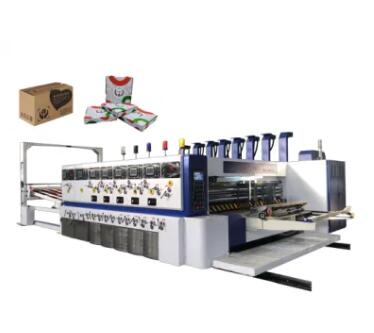What are the primary types of printing machinery
2023-10-25
The primary types of printing machinery are categorized based on the printing method they use. Here are the most common types of printing machinery:
1. Offset Printing Presses: Offset printing, also known as lithography, is a widely used commercial printing method. It involves the transfer of ink from a plate to a rubber blanket, which then transfers the image to the printing surface (usually paper). Offset printing is known for its high-quality and consistent results, making it suitable for large print runs and high-resolution work.
2. Flexographic Printing Presses: Flexography, or flexo printing, is commonly used for packaging and label printing. It uses flexible relief plates and fast-drying inks, making it suitable for printing on various substrates, including plastics, cardboard, and paper. Flexo printing is known for its efficiency and ability to print on different materials.
3. Digital Printing Machines: Digital printing has gained popularity due to its versatility and ability to produce small to medium print runs with variable data. It includes various technologies, such as inkjet and laser printing. Digital presses are often used for personalized marketing materials, short-run jobs, and print-on-demand applications.
4. Screen Printing Machines: Screen printing involves using a mesh screen to transfer ink onto a substrate. It is commonly used for apparel, signage, posters, and specialty graphics. Screen printing is known for its ability to print on a wide range of materials and produce vibrant, opaque colors.
5. Gravure Printing Presses: Gravure printing is often used for long print runs of high-quality materials like magazines, catalogs, and packaging. It uses a cylinder with engraved cells to transfer ink to the substrate, creating a continuous tone effect.
6. Letterpress Printing Machines: Letterpress is a relief printing method that uses raised, movable type or plates to transfer ink to paper. While it has become less common for general printing, it is still used for specialized applications like fine art printing and letterpress invitations.
7. Heat Transfer Printing Machines: Heat transfer printing involves transferring an image from a carrier paper to a substrate using heat and pressure. It is commonly used for textiles, such as t-shirt printing, and for applying graphics to ceramics, metal, and plastic.
8. 3D Printing Machines: 3D printing, also known as additive manufacturing, creates three-dimensional objects layer by layer. While it differs from traditional 2D printing, it's included in the printing machinery category due to its role in rapid prototyping, product design, and custom manufacturing.
9. Screenless Printing Machines: These innovative printing technologies, like electrostatic printing and magnetography, use different principles to create images on paper or other substrates without traditional printing plates or screens.
These are the primary types of printing machinery, each with its unique strengths, applications, and technological processes. The choice of printing method depends on the specific requirements of a printing project, including factors like quantity, materials, and desired print quality.



